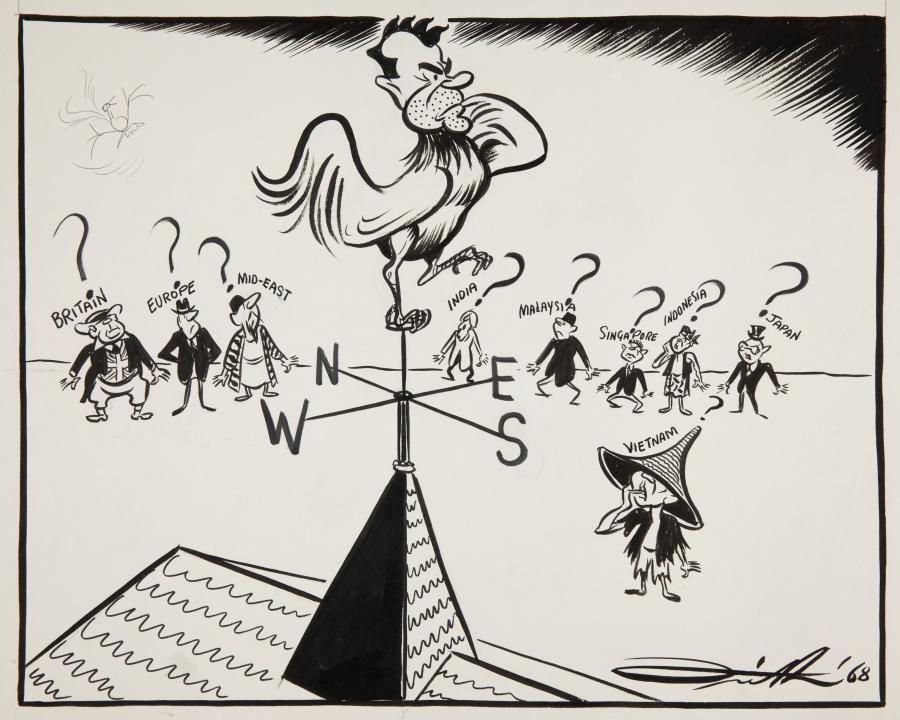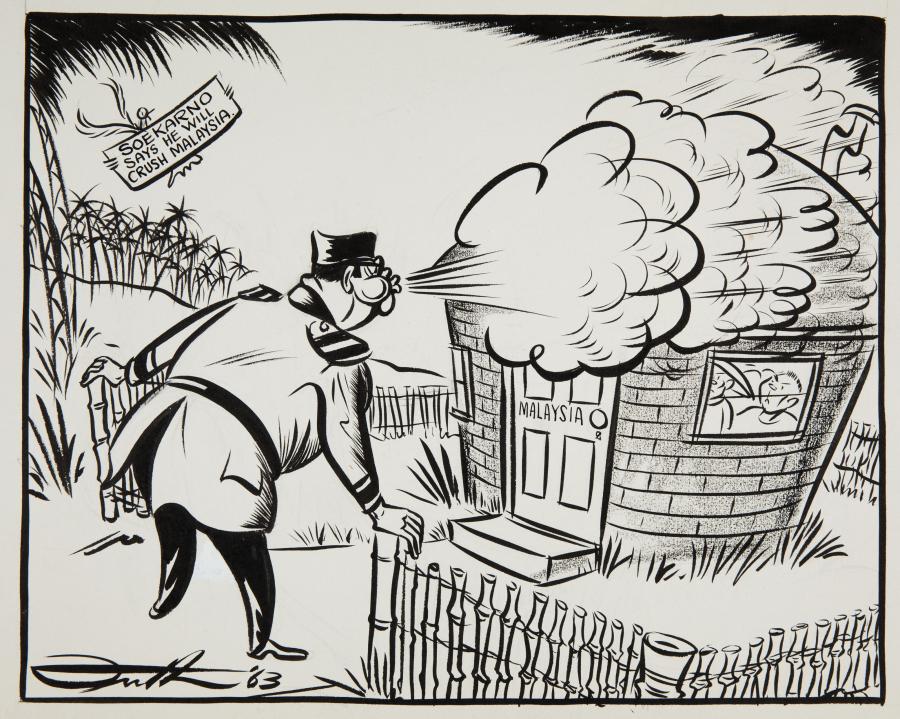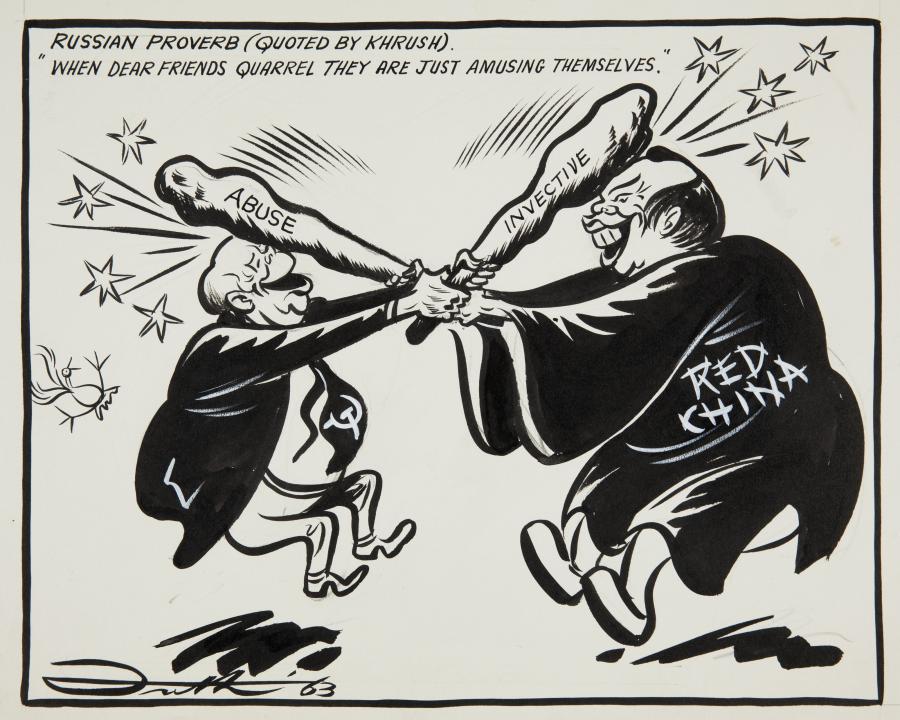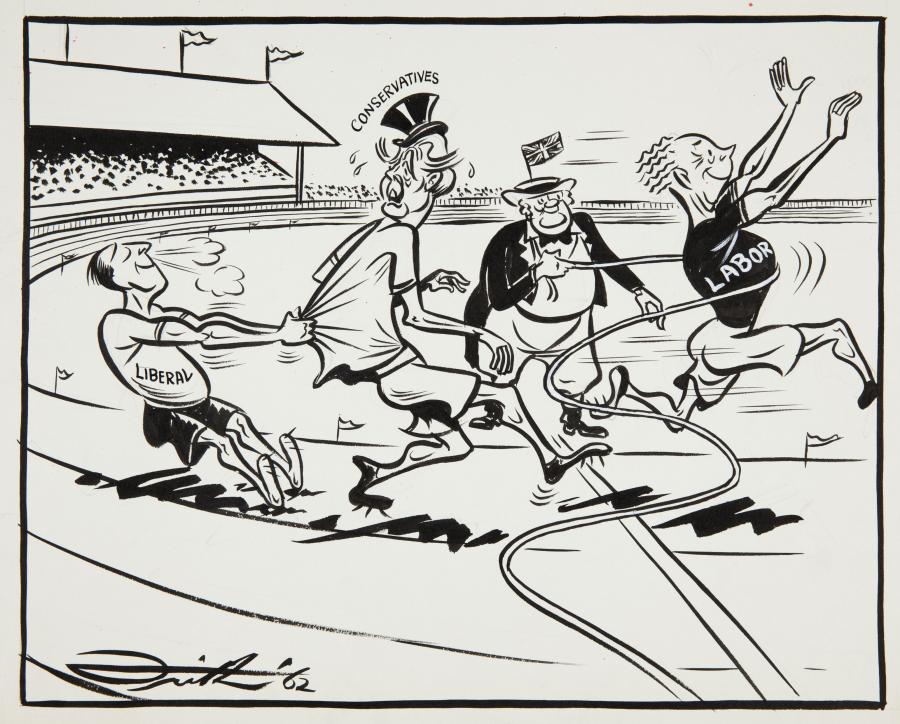Distorting the image: Caricature for an Australian audience
Cartoonist and caricaturist, John Frith (1906-2000) created a daily drawing for the Herald newspaper in Melbourne.
The 1960s was a turbulent decade politically and Frith created this series of drawings to articulate some of the key international political struggles for an Australian audience. The main actors on Frith’s stage were Australian Prime Ministers, as well as the world leaders who dominated the politics of the period. Frith began his career as a cartoonist in 1929 at the time of the onset of the Great Depression in Australia.
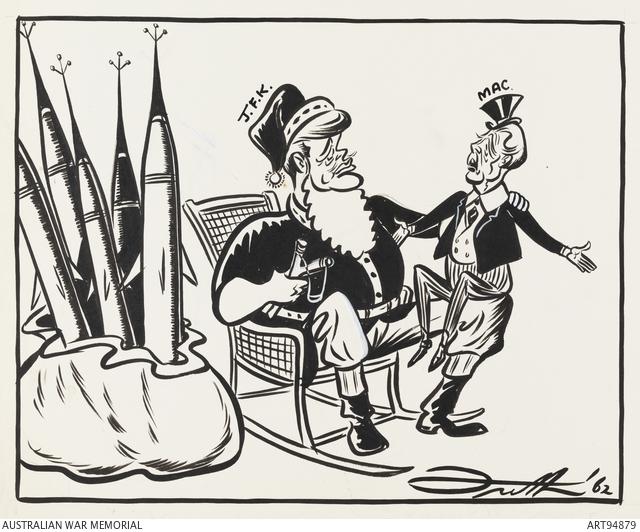
[JFK Santa] drawn in Melbourne in 1962, pencil, ink and gouache on paper, 38.3 x 55.9 cm, Donated in 2013, AWM ART94879.
Inspired by the calligraphic arts of Japan, Frith initially joined The Bulletin, a weekly Sydney newspaper. At The Bulletin, Frith applied his skills as a caricaturist, first developed while at school, to the vagaries of Australian politics. This exciting and turbulent time would see him become a notable artist and create some of the most striking drawings of the 20th century. In the role of caricaturist, Frith held up a mirror for the Australian public to view his exaggerated and distorted images of some of the most notable people in Australian history. In Sydney he used the power of humour to lighten the gravity of public ceremony, a skill he learnt from his colleagues at The Bulletin who happened to be two of the great artists of the time: Norman Lindsay and Ted Schofield.
For The Bulletin, Frith produced likenesses of the great actors and singers who visited Sydney’s shores, many of whom he met in person. Frith created drawings that relied on minimal background and simple line to portray with dramatic insight, the personalities of his subjects. Norman Lindsay taught Frith the art of moulding the heads of his subject in plasticine and then manipulating their expression in order to create inspirational caricatures of his subjects. The Memorial has a small collection of prominent Australian heads, many of which have been preserved by being cast into metals like bronze and copper, including Robert Menzies (pictured). Having spent five years at The Bulletin and then a further five years at The Sydney Morning Herald, Frith was hired to produce a daily cartoon for The Herald in Melbourne, a place he would remain until his retirement in 1969.
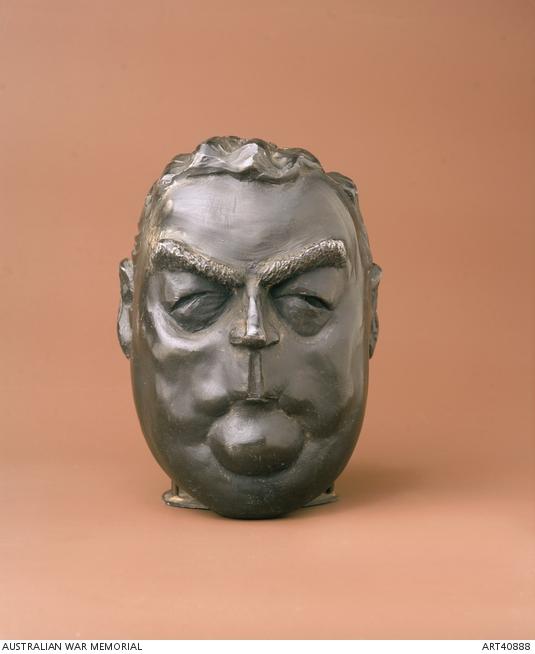
Robert Menzies, created in Sydney 1939, type-metal on copper base with silver solder, 15.4 x 11.3 x 13.2 cm, Purchased in 1981.
Throughout his life, Frith continued to be influenced by Japanese prints, borrowing from the linear division and the compressed compositional space which he applied successfully to his drawing. Frith’s unique skill was the production of engaging works that pared down the complex international political dramas that unfolded throughout the 1960s. Stripping back the layers of national and international events, partly in relation to the expansive and protracted nature of the Cold War, he exposed the combatant nature of political life in a simple and humorous way. Frith’s drawings satirised the serious side of political life, communicating to an Australian audience the nuances of the Profumo Affair, the Cuban Missile Crisis and the British and American political race in the lead up to the Vietnam War. The drawings from this 1960s period remain contemporary in their communication of political tensions, many of which still resonate today.
The Memorial’s collection of ninety-eight drawings by John Frith was donated by his family in 2013.
